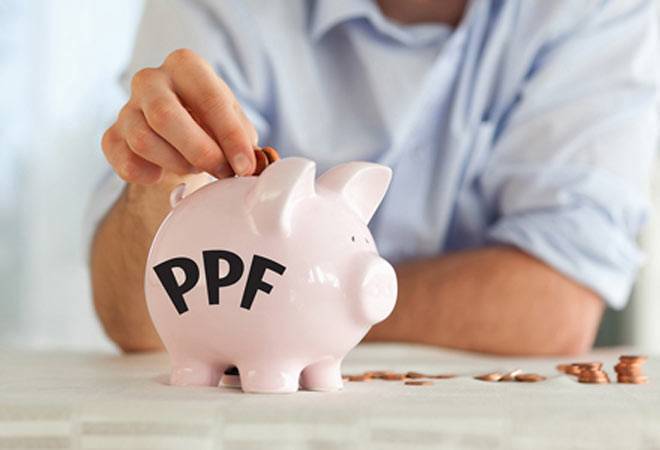Public Provident Fund (PPF) is a government-run post office scheme that offers 7.1 per cent interest rate. Its provides exemption from tax, guaranteed returns, assured income, and the maturity period is 15 years. However, people considering PPF as a retirement planning investment scheme can continue after 15 years. PPF comes with partial withdrawal facility, and people looking for long-term investment can opt it to get good returns.
Public Provident Fund (PPF): You must have heard about the specialty, interest and popularity of Public Provident Fund (PPF). This scheme is only for Indian citizens. This is the reason why it was considered the most popular. But, the benefits available in it make it more attractive. Although the banks or post offices themselves explain the benefits of investing in PPF. But, there are many things in it which an average investor is often not aware of. Be it interest or tax free investment or the amount received on maturity. This is an excellent investment tool in many aspects. The maturity period is 15 years. But, if you extend your investment beyond 15 years, your money will grow faster. Let us tell you about this formula…
First understand the 3 situations. The biggest advantage of the scheme is that even if you don’t invest money in it after the maturity period of 15 years, you will continue receiving interest on your investment. There are total 3 such options on maturity available on a PPF account. By choosing any of the options, you can increase your money further.
Read More: Supreme Court’s Verdict On EPFO Case: Online Applications, Joint Options And Other Details Inside
PPF: Withdrawal Rules
On maturity of PPF account, withdraw the amount you deposited in it and the interest received on it.
This is the first option.
In case of account closure, your entire money will be transferred to your account.
The special thing is that the money and interest received on maturity will be completely tax free.
Also, you will not have to pay any tax on the number of years you have invested.
PPF: Increase investment tenure
The second advantage or option is that you can extend your account further on maturity.
Account extension can be taken for tenure of 5-5 years.
But, keep in mind that you will have to apply for extension only 1 year before the maturity of the PPF account.
However, you can withdraw money during the extension.
The rules of pre-mature withdrawal do not apply in this.
Read More: Higher Interest To Free Insurance, EPFO Provides Account Holders With Various Benefits
PPF: Increase amount without investment
The third-biggest advantage of the PPF account is that even if you do not choose the above two options, your account will continue to operate after maturity.
It is not necessary that you invest in it.
Maturity will automatically extend by 5 years.
The good thing is that you will keep getting interest in it.
Here also, an extension of period of 5-5 years can be applicable.
PPF: Where to open PPF account?
A PPF account can be opened in any government or private bank.
Also, you can open an account in any post office of your city.
Minors can also open an account, but the parents’ holding on their behalf will remain for 18 years.
PPF: How will Rs 1K grow into Rs 5.16 lakh?
At present 7.1 per cent interest is being given in PPF. If you invest for 15 or 20 years with this interest rate, you can create a huge fund.
Read More: PPF: How you can double your income through clubbing your life partner’s PPF account; know the trick
PPF: Return you will get in 5 years
| Year of deposit | Amount deposited | Interest earned | Year end Balance |
| 1yr | ₹ 12,000 | ₹ 462 | ₹ 12,462 |
| 2yr | ₹ 24,000 | ₹ 1,808 | ₹ 25,808 |
| 3yr | ₹ 36,000 | ₹ 4,102 | ₹ 40,102 |
| 4yr | ₹ 48,000 | ₹ 7,411 | ₹ 55,411 |
| 5yr | ₹ 60,000 | ₹ 11,806 | ₹ 71,806 |
PPF: Return you will get in 10 years
| Year of deposit | Amount deposited | Interest earned | Year end Balance |
| 1yr | ₹ 12,000 | ₹ 462 | ₹ 12,462 |
| 2yr | ₹ 24,000 | ₹ 1,808 | ₹ 25,808 |
| 3yr | ₹ 36,000 | ₹ 4,102 | ₹ 40,102 |
| 4yr | ₹ 48,000 | ₹ 7,411 | ₹ 55,411 |
| 5yr | ₹ 60,000 | ₹ 11,806 | ₹ 71,806 |
| 6yr | ₹ 72,000 | ₹ 17,366 | ₹ 89,366 |
| 7yr | ₹ 84,000 | ₹ 24,173 | ₹ 1,08,173 |
| 8yr | ₹ 96,000 | ₹ 32,314 | ₹ 1,28,314 |
| 9yr | ₹ 1,08,000 | ₹ 41,886 | ₹ 1,49,886 |
| 10yr | ₹ 1,20,000 | ₹ 52,990 | ₹ 1,72,990 |
PPF: Return you will get in 15 years
| Year of deposit | Amount deposited | Interest earned | Year end Balance |
| 1yr | ₹ 12,000 | ₹ 462 | ₹ 12,462 |
| 2yr | ₹ 24,000 | ₹ 1,808 | ₹ 25,808 |
| 3yr | ₹ 36,000 | ₹ 4,102 | ₹ 40,102 |
| 4yr | ₹ 48,000 | ₹ 7,411 | ₹ 55,411 |
| 5yr | ₹ 60,000 | ₹ 11,806 | ₹ 71,806 |
| 6yr | ₹ 72,000 | ₹ 17,366 | ₹ 89,366 |
| 7yr | ₹ 84,000 | ₹ 24,173 | ₹ 1,08,173 |
| 8yr | ₹ 96,000 | ₹ 32,314 | ₹ 1,28,314 |
| 9yr | ₹ 1,08,000 | ₹ 41,886 | ₹ 1,49,886 |
| 10yr | ₹ 1,20,000 | ₹ 52,990 | ₹ 1,72,990 |
| 11yr | ₹ 1,32,000 | ₹ 65,733 | ₹ 1,97,733 |
| 12yr | ₹ 1,44,000 | ₹ 80,234 | ₹ 2,24,234 |
| 13yr | ₹ 1,56,000 | ₹ 96,616 | ₹ 2,52,616 |
| 14yr | ₹ 1,68,000 | ₹ 1,15,013 | ₹ 2,83,013 |
| 15yr | ₹ 1,80,000 | ₹ 1,35,568 | ₹ 3,15,568 |
PPF: Return you will get in 20 years
| Year of deposit | Amount deposited | Interest earned | Year end Balance |
| 1yr | 12,000.00 | ₹ 462 | ₹ 12,462 |
| 2yr | 24,000.00 | ₹ 1,808 | ₹ 25,808 |
| 3yr | 36,000.00 | ₹ 4,102 | ₹ 40,102 |
| 4yr | 48,000.00 | ₹ 7,411 | ₹ 55,411 |
| 5yr | 60,000.00 | ₹ 11,806 | ₹ 71,806 |
| 6yr | 72,000.00 | ₹ 17,366 | ₹ 89,366 |
| 7yr | 84,000.00 | ₹ 24,173 | ₹ 1,08,173 |
| 8yr | 96,000.00 | ₹ 32,314 | ₹ 1,28,314 |
| 9yr | 1,08,000.00 | ₹ 41,886 | ₹ 1,49,886 |
| 10yr | 1,20,000.00 | ₹ 52,990 | ₹ 1,72,990 |
| 11yr | 1,32,000.00 | ₹ 65,733 | ₹ 1,97,733 |
| 12yr | 1,44,000.00 | ₹ 80,234 | ₹ 2,24,234 |
| 13yr | 1,56,000.00 | ₹ 96,616 | ₹ 2,52,616 |
| 14yr | 1,68,000.00 | ₹ 1,15,013 | ₹ 2,83,013 |
| 15yr | 1,80,000.00 | ₹ 1,35,568 | ₹ 3,15,568 |
| 16yr | 1,92,000.00 | ₹ 1,58,435 | ₹ 3,50,435 |
| 17yr | 2,04,000.00 | ₹ 1,83,778 | ₹ 3,87,778 |
| 18yr | 2,16,000.00 | ₹ 2,11,771 | ₹ 4,27,771 |
| 19yr | 2,28,000.00 | ₹ 2,42,605 | ₹ 4,70,605 |
| 20yr | 2,40,000.00 | ₹ 2,76,479 | ₹ 5,16,479 |





































